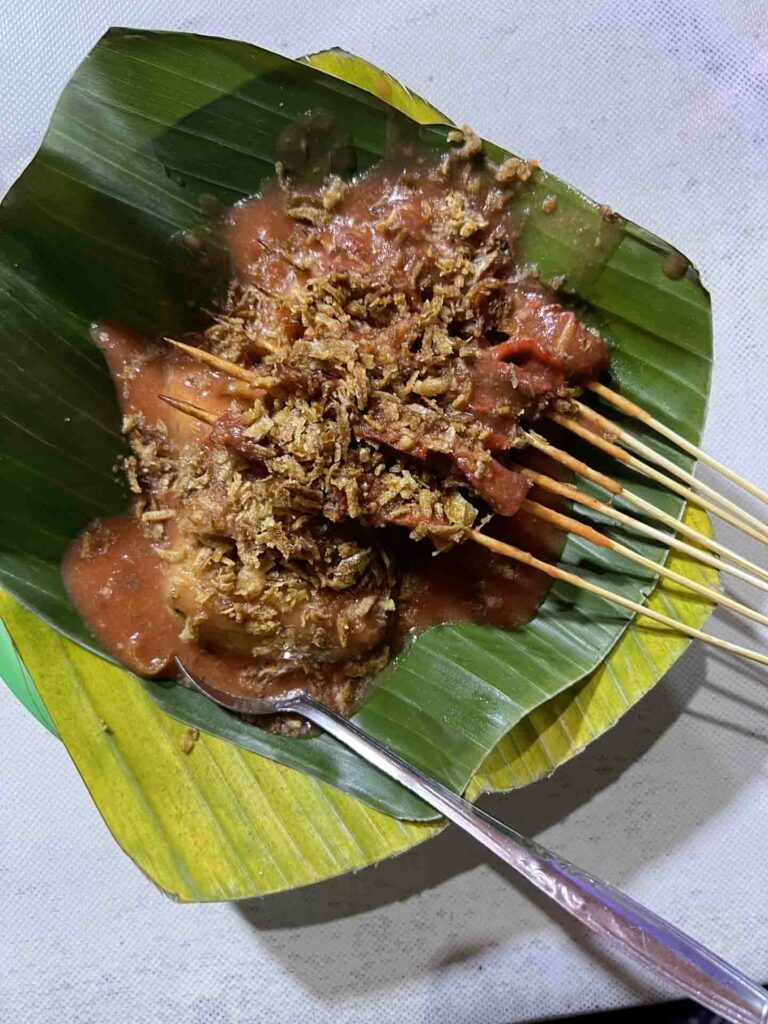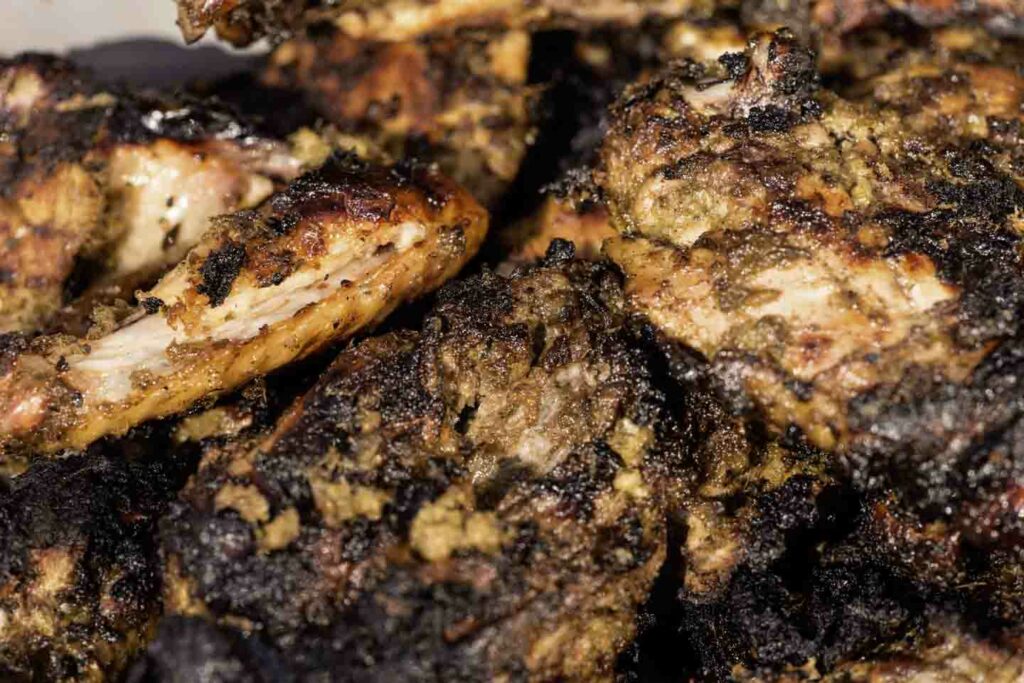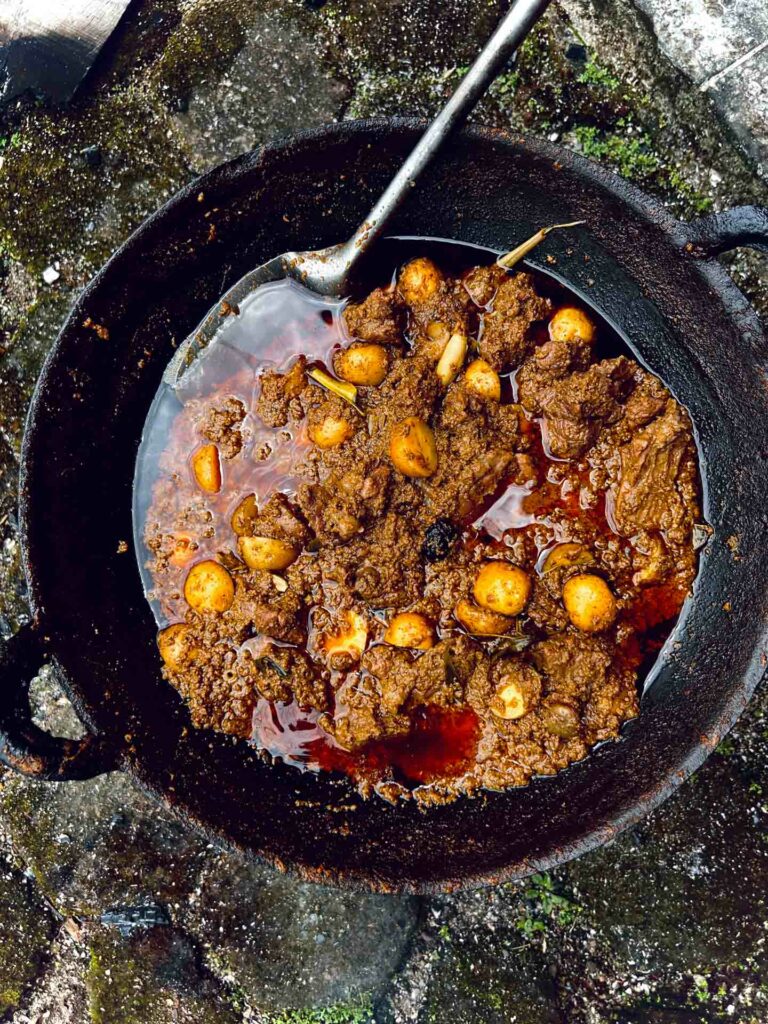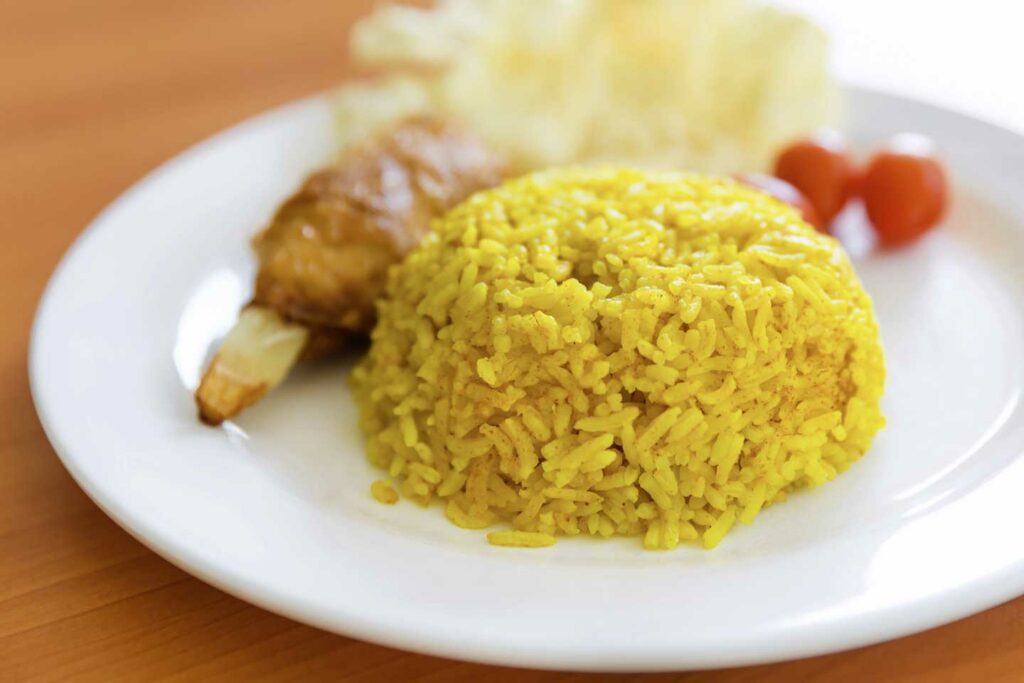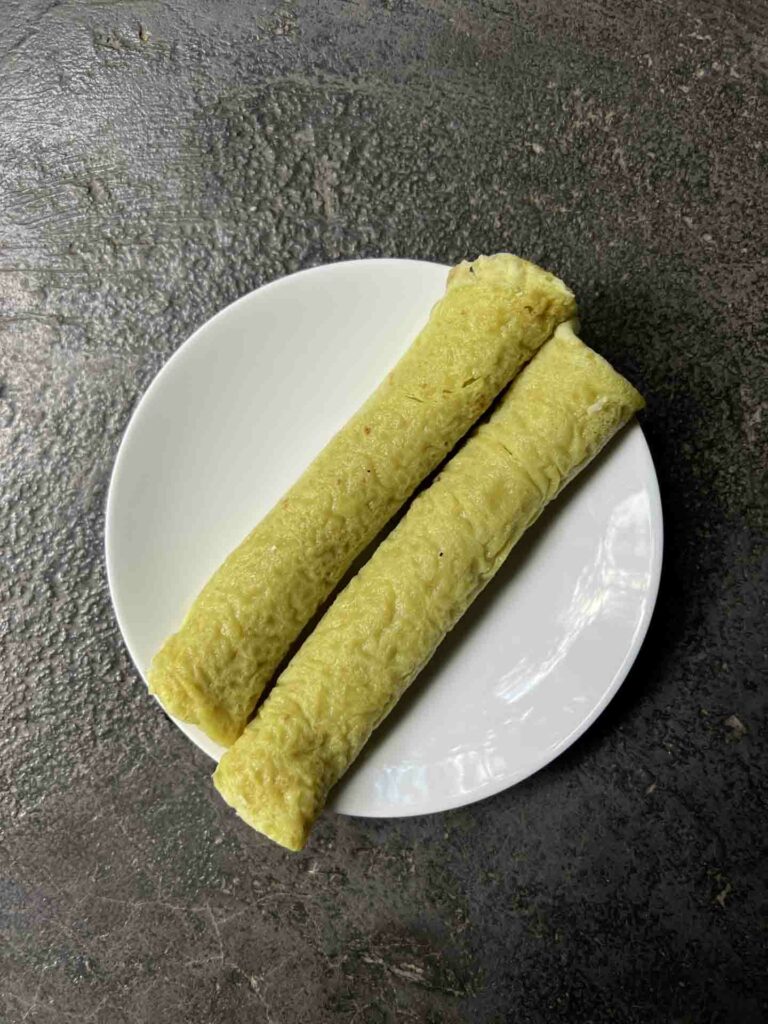Not only in Mindanao, it’s possible to find Muslim food in Philippines from Manila to many other islands. Here are the unique Muslim Filipino foods from the Maranao people.
Many people visit the Quiapo Market in Manila to try Filipino food. It’s known for friendly market vendor, curious residents and the viral pancit Palabok at Jolli Dada’s.
If you don’t eat pork, you should try their halo halo, I believe it is one of the best in Manila.
Quiapo is also considered a pilgrimage for Catholics, and so it is a very popular attraction for Filipinos.
When we visited we saw Friday novenas at the famous Quiapo Church of Black Nazarene, and while it was busy we learned that during the Feast of the Black Nazarene up to 6.5 million people visit.
What surprised us most walking through the market was a large arch indicating a historical “Muslim Town” with a mosque behind it.
As a primarily Catholic country we did not expect to see many mosques out Mindanao, especially not in the neighborhood of the most important church in the country.
But actually when you travel the Philippines you find pockets of communities everywhere, even in El Nido in the kite surfing community of Sibaltan.
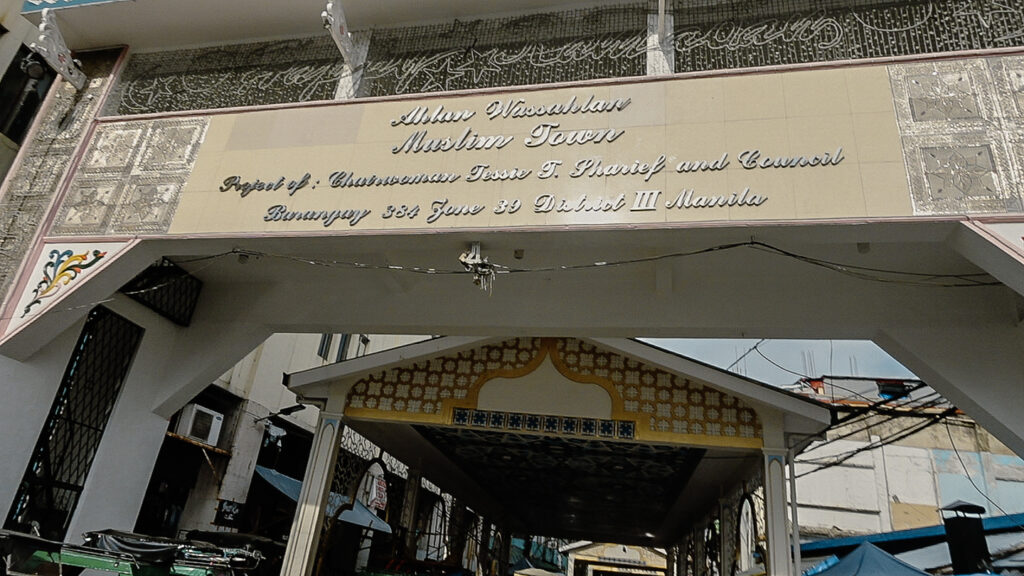
Muslim Town in Manila
The area began to develop as a center for the Muslim community in Manila during the Spanish colonial period, which lasted from 1565 to 1898.
The influx of Muslim traders from the southern Philippines, particularly from Mindanao and the Sulu Archipelago, contributed to the area’s growth in the late 19th century.
In the 20th century, particularly after World War II, Muslim Town became more prominent as the Muslim population in Manila increased.
With so much conflict happening around the world it may be surprising that the Church lives in harmony with its Muslim residents .
And that’s expressed in a inspiring way through food during the Feast of the Black Nazarene.
Muslim town businesses are invited to participate and benefit in the influx of tourists, and able to sell Halal Muslim food to the visitors.
This a great spot to try traditional foods in Manila.
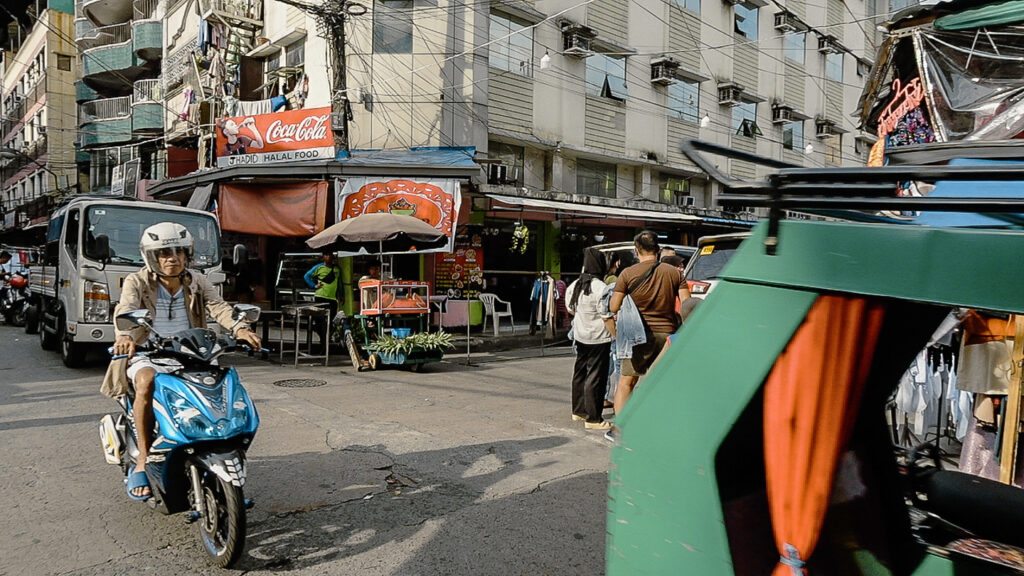
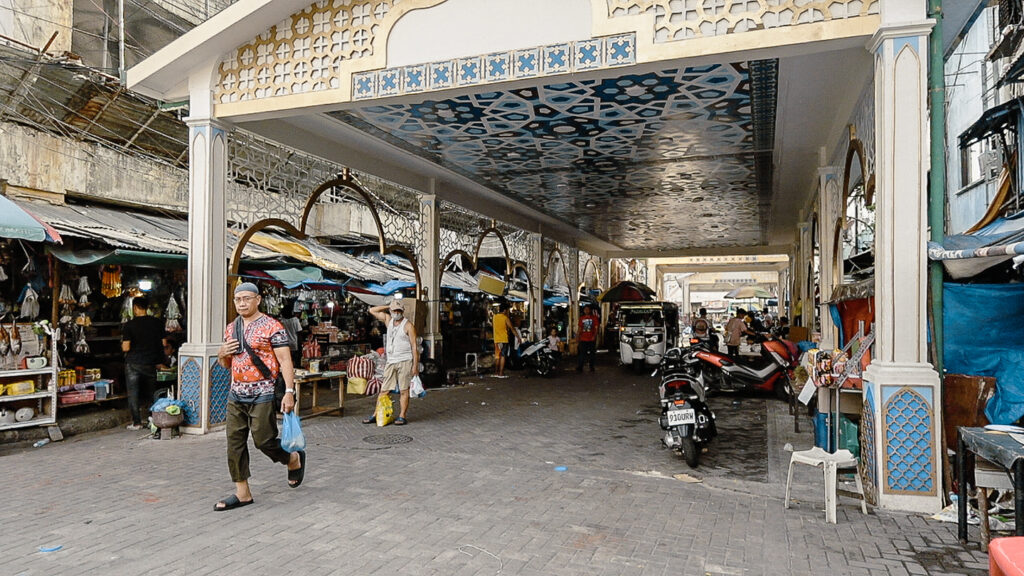
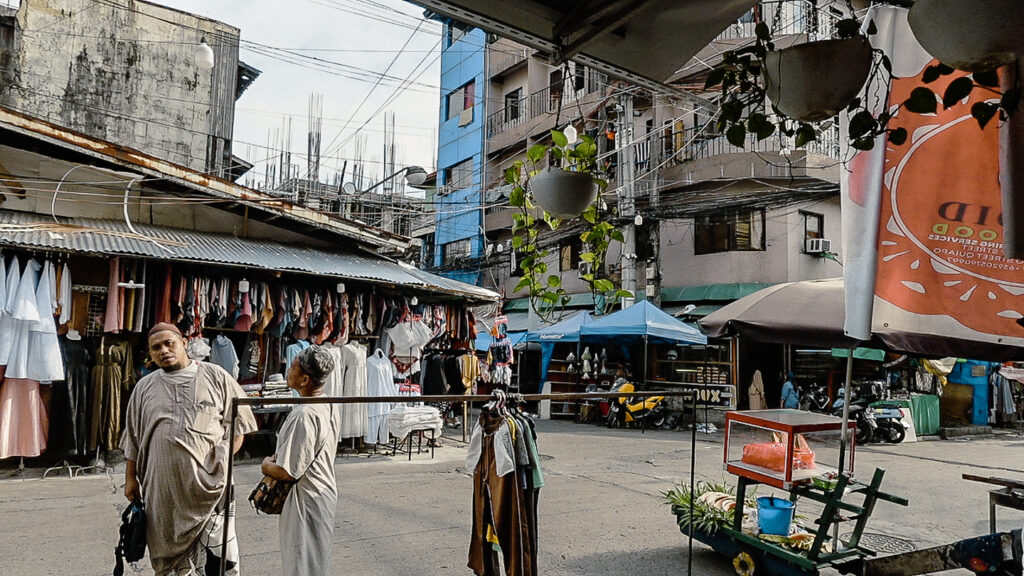
The Maranao People Who Live in Muslim Town
The Maranao people, predominantly Muslim, are indigenous to the southern Philippines, particularly in the Lanao del Sur region on Mindanao island.
Known for their deep-rooted traditions, they form one of the largest Muslim communities in the Philippines.
Their society is centered around a sophisticated system of traditions and artistry. The Maranao are well-regarded for their resilience and preservation of Islamic practices. They have resisted various colonization efforts for centuries.
A unique part of Maranao identity is their culinary heritage, shaped by Malay and Middle Eastern influences, which includes a variety of rich, spiced dishes that differ from other Filipino fare.
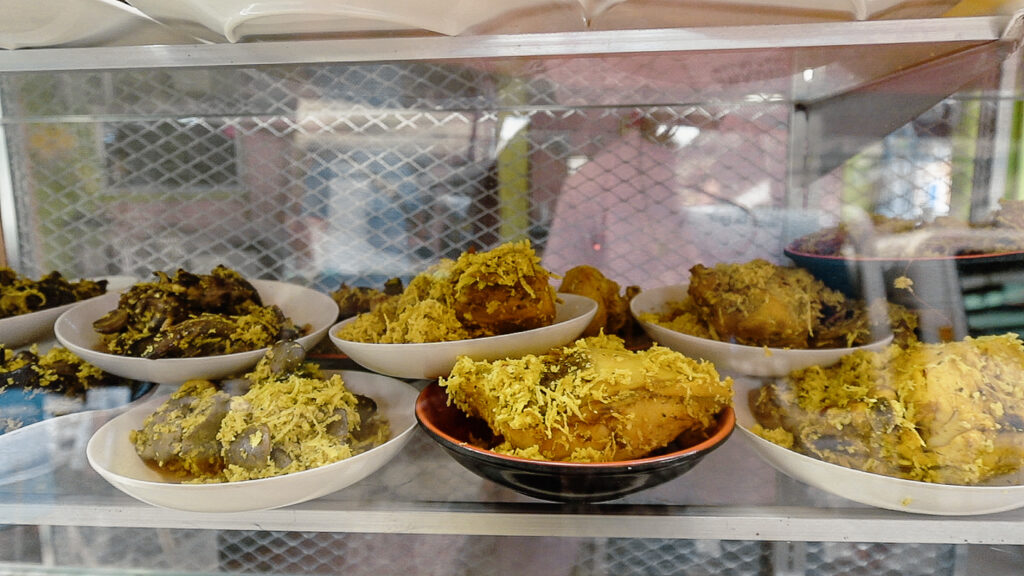
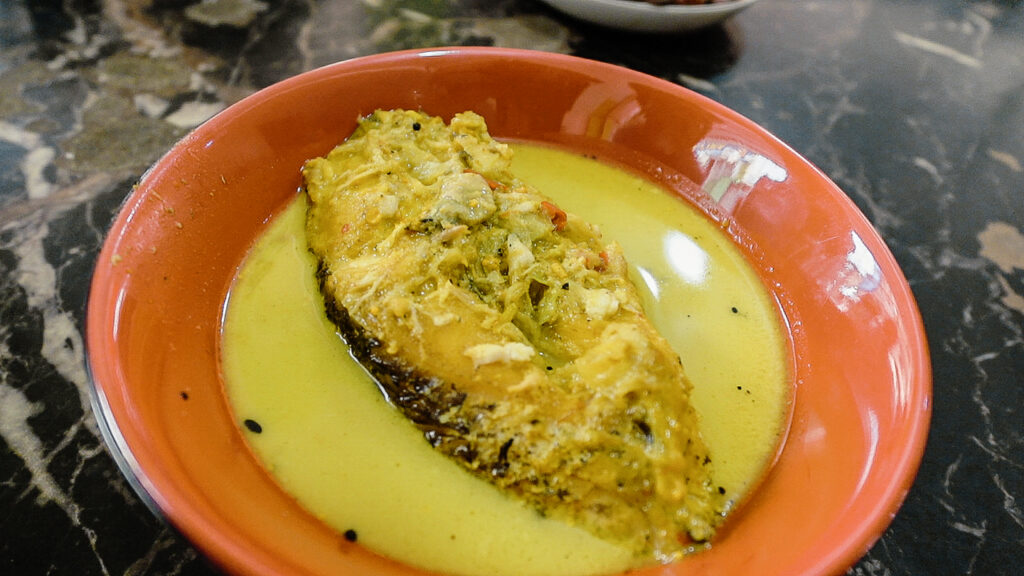
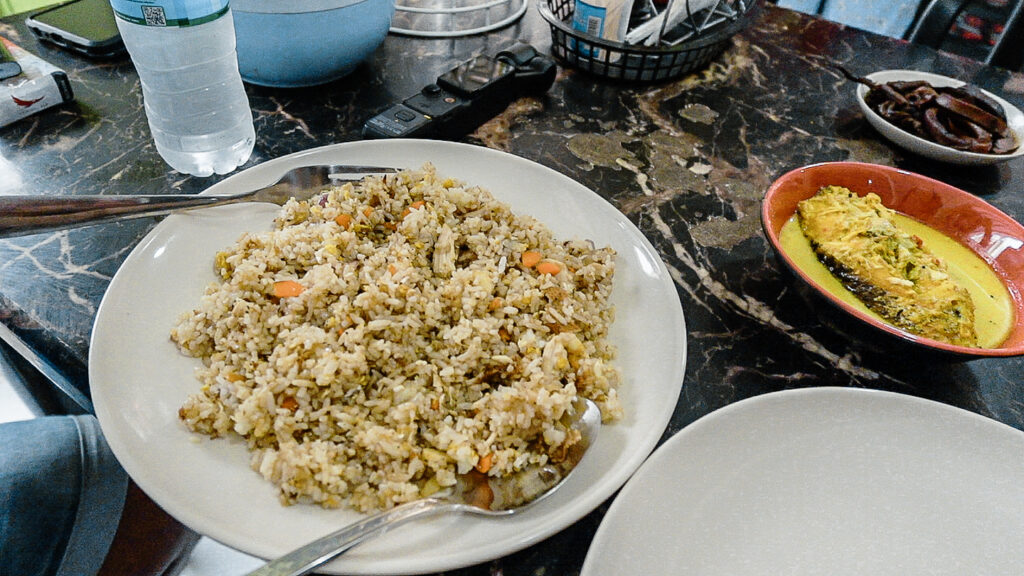
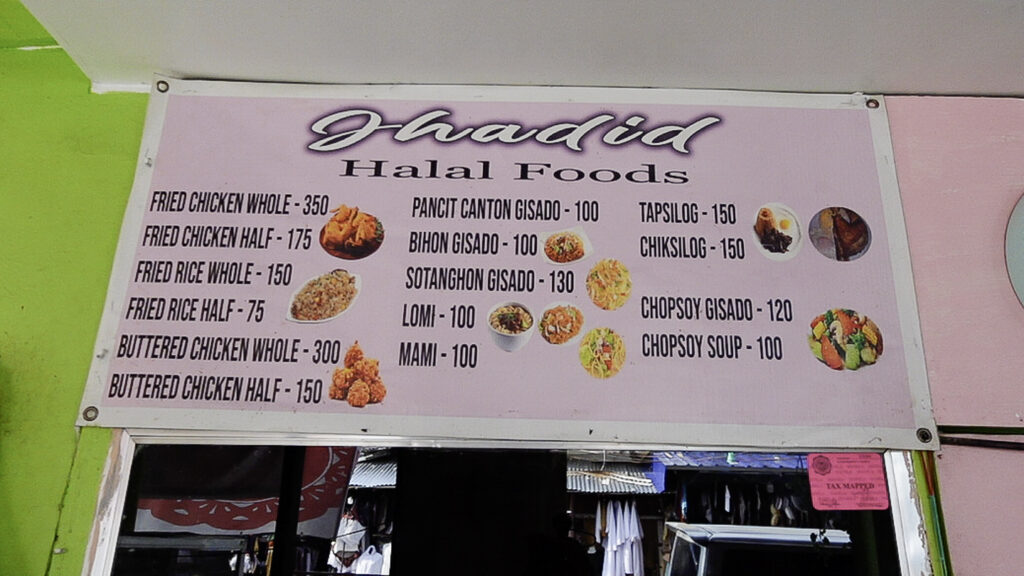
Traditional Muslim Food in Philippines
Maranao cuisine relies heavily on native ingredients like coconut milk, turmeric, and burnt coconut, reflecting the natural resources around Lake Lanao and Mindanao.
These dishes highlight the Maranao’s cultural exchanges with neighboring countries, their resourcefulness, and their pride in showcasing their heritage through food.
Satti | Grilled Meat Skewers
Satti, similar to Malaysian or Indonesian satay, involves marinated chicken or beef grilled over flames.
Maranao cooks coat it with spices, then grill until smoky and tender.
Traditionally served with a spicy, vinegar-based sauce, Satti reflects the region’s Malay influence. Often found in street markets, it’s an easy-to-eat snack.
Piyanggang Manok | Blackened Chicken
Piyanggang manok, a celebrated Maranao dish, is chicken marinated in coconut milk, lemongrass, and spices. The addition of burnt coconut gives it a deep, blackened color and rich flavor.
It is first braised in the marinade and then grilled to charred perfection. This traditional Muslim dish in the Philippines represents the Maranao love for bold, layered flavors and traditional cooking techniques.
Tiula Itum | Black Soup
Tiula itum, meaning “black soup,” is a hearty, spiced broth made with beef or chicken and colored black by burnt coconut.
A unique Maranao specialty, it’s often served at special occasions like weddings. Its complex, smoky taste reflects the influence of Malay and other Southeast Asian cuisines.
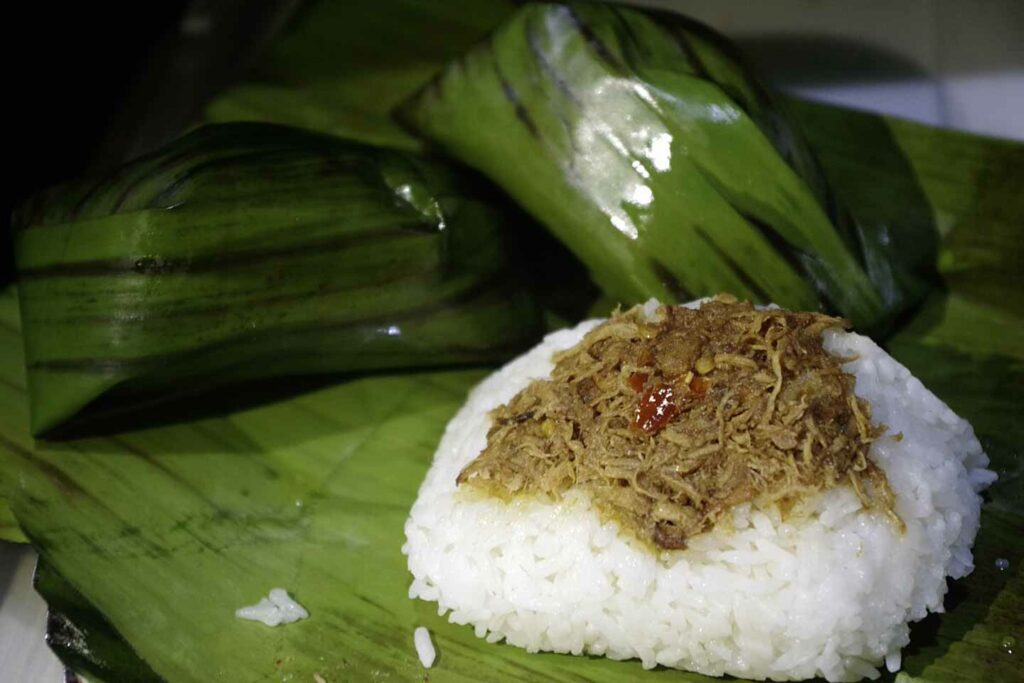
Pastil | Rice with Toppings
Pastil combines steamed rice with shredded, spiced chicken or beef, wrapped in banana leaves.
This dish is easy to carry and popular for on-the-go meals. Maranao vendors often sell pastil at markets as an affordable, filling option that showcases a mix of local spices and flavors.
Bakas | Smoked Fish
Bakas is traditionally prepared by Maranao fishermen who smoke fresh tuna or mackerel until it’s deeply flavored and aromatic.
Served with rice or as a side dish, bakas exemplifies the Maranao’s coastal connection and resourcefulness in preserving fish. A very common Muslim food in the Philippines using bakas is Piaparan.
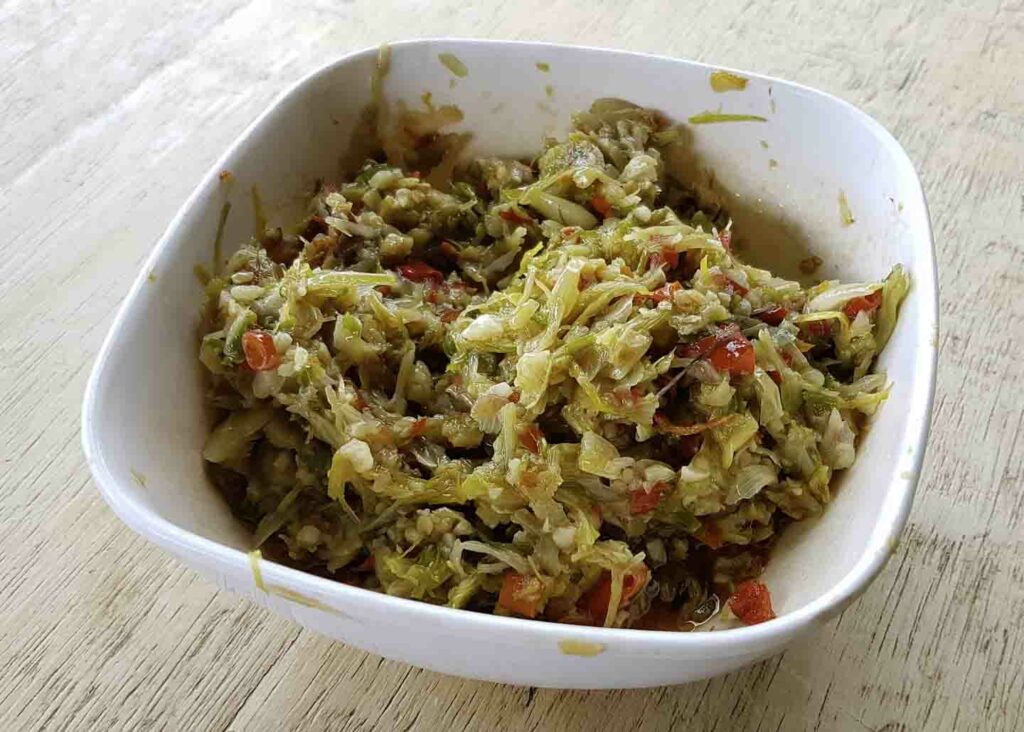
Palapa | Spicy Condiment
Palapa, a Maranao condiment, is a paste of white scallion, chilis, ginger and shredded coconut. It’s used to add spice and heat to nearly every dish, from rice to meats.
Palapa’s bold flavors reflect the Maranao palate, which favors spices and textures that awaken the taste buds.
Rendang | Spiced Meat Stew
Though Indonesian in origin and considered a traditional Padang food, rendang reflects the history and immigration of the Philippines. As my people, the Minangkabau from West Sumatra immigrated to Manila.
One of five national dishes in Indonesia, it was adopted by Maranao cooks, who slow-cook beef with coconut milk, lemongrass, and local spices.
Now a Filipino food, this hearty stew, thickened over hours, offers a rich, velvety texture and a complex, slightly sweet flavor. It’s often reserved for special occasions due to its time-intensive preparation which can be up to 12 hours cooked over a wood fire..
Bangus Tausug | Tausug Milkfish
Bangus tausug is a type of fish marinated in vinegar, garlic, and spices then fried to a crisp finish.
Although it is a dish by the Tausug people, who live southwest of the island of Mindanao it’salso popular in the Maranao community.
With a balance of sour and savory, bangus tausug highlights the region’s love for flavor-packed fish dishes.
Kuning | Yellow Rice
Kuning, or yellow rice, is cooked with turmeric, lemongrass and spices, giving it a bright color and aromatic quality.
It is originally from the Indonesian island of Sulawesi, which is close to Mindanao and known as nasi kuning. The Indonesian rice dish uses coconut milk but the Filipino version does not.
This festive rice dish accompanies special meals in Maranao households, reflecting their celebration of vibrant, richly spiced food.
Daral | Coconut Crepes
Daral, a dessert of thin crepes filled with sweetened coconut. The traditional batter uses ground glutinous rice with coconut milk. Sometimes they are brightly coloured green, pink or yellow.
This Filipino sweetshowcases the Maranao’s taste for subtly sweet treats served for merienda.
Often served at family gatherings, daral offers a soft, chewy texture. It pairs well with tea and reflects the influence of neighboring Southeast Asian desserts.
It is very similar to Sri Lankan pancakes that are also like a rolled crepe with a coconut jaggery filling.
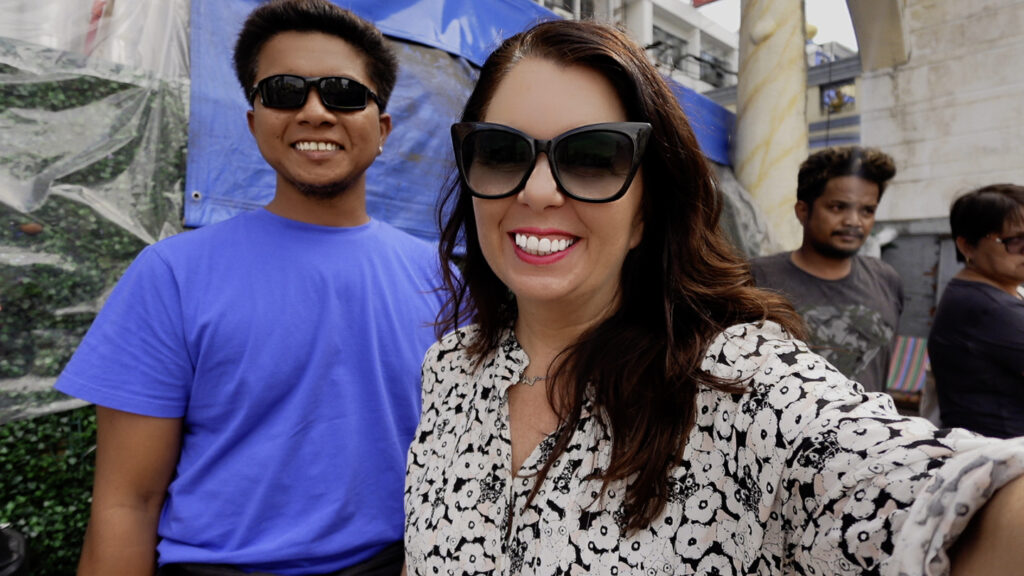
Although many Christians eat in Muslim town during the festival, you can visit any time of the year. We found everyone welcoming, especially where we ate.
If you are planning to go it’s a good idea to respect the local culture and dress.
Women do not need to cover their hair or dress like locals but it’s respectful not to wear clothing that is too revealing just as you would visiting a church. The same for men as well. You can see what we wore in the video.
